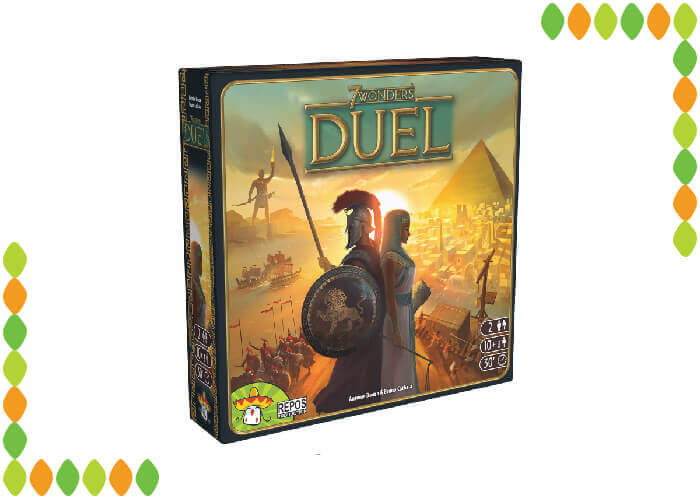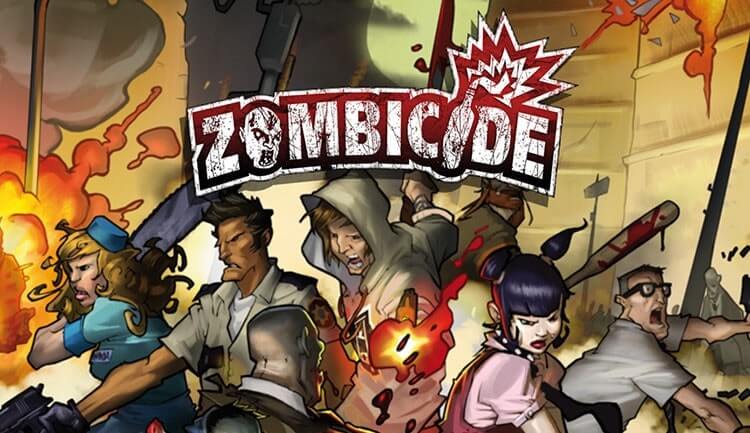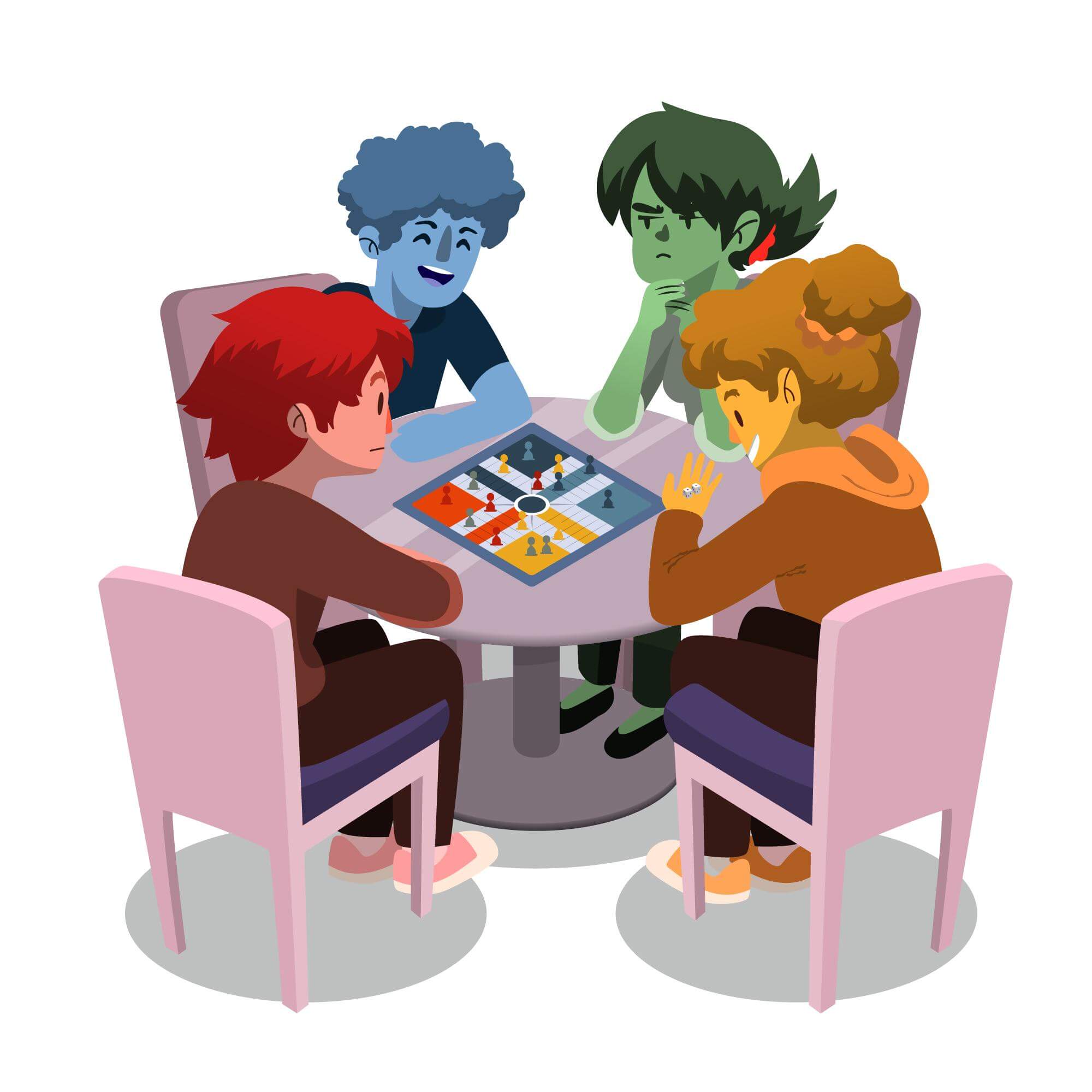English was not my first language; my mother tongue is Farsi. But thankfully, I know enough English to be writing this right now. You must also be proficient in English if you’re reading this. We both probably know English well enough to play board games together. But that’s not always the case. Board games aren’t limited to a nation or language; we have evidence of board games being played throughout the ages in all corners of the world. It is something to be enjoyed by all.
Sometimes in your playing group, you may have someone who speaks a different language from others. Or in my case, when I want to play with my friends who only speak Farsi, we have a major problem in choosing our games; language dependence.
A lot of the games you find in the market today have components with texts on them, and if someone cannot understand the language, they cannot play the game. And you know how much of a bummer that is. Luckily, we have tons of great games that don’t have any text (with the exception of the rules in the rulebook) and rely on icons and symbols to convey their message.
Here I’ve collected a list of some of the best language-independent board games, in my opinion;
1. Great Western Trail

Great Western Trail is a board game designed for two to four players set in 19th century USA. Players take the roles of cattle herders attempting to take their herds on the Great Western Trail from Texas to Kansas City. Players begin the game in Texas with a starting hand of cards. These cards are different breeds of cows with various values and colors.
Throughout the game, players will move their pawns to different settlements on their way to Kansas City, and perform actions. Players could gain money, buy cows, hire assistants, move their locomotive, or construct buildings to help them later on in the game.
The path to Kansas City has many different routes with different lengths, actions, and obstacles. It is up to the players to find out the best course of action and the best route to reach Kansas. Once a player reaches the end of their destination, they must reveal the cows in their hand and sell them to gain profits. Once that is done, the player draws a new hand of cards and returns to Texas, beginning the journey again.
Everything in Great Western Trail is shown using simple and clever icons that players learn very quickly, so that it doesn’t interfere with the complexity of the game.
2. Istanbul

Dive into the heart of the Turkish bazaar in Istanbul! In this game, two to five players can play as a merchant, leading a band of assistants throughout the stores of the Istanbul market, collecting money and resources to buy rubies.
The game is set up by placing the 16 market tiles in a 4×4 grid (randomly or by the rules specified). Players then place their merchant on top of their four assistants, and move around the market dropping off and picking up assistants to perform actions. You could get resources from warehouses, sell them in the markets, gamble for money in the teahouse, repair your wagon, free your family member from jail, and so on. All of these actions, in one way or another, lead to a method of buying rubies.
The first player to buy five rubies or more is the winner of the game. Istanbul uses a clever system of icons and colored arrows to describe actions and events, so the language of the players or the orientation of the board has no impact on the game.
3. Century: Spice Road

The first episode of a hit trilogy by Emerson Matsuuchi, Century: Spice Road takes players to the core of the eastern spice market, where they compete with each other to get the most profits from buying and selling spices. It is a resource management game for two to five players and is played with two decks of cards.
One of the decks contains advancement cards which must be purchased by players from the card row. Players add these cards to their hands so that in future turns they can play them. These cards either produce spices, upgrade them, or trade them. The other deck contains objective cards and five of them are always revealed. These cards have a number of different spices that players have to pay to gain a number of points shown on the card.
Once any player gets their 5th objective card, the game ends and points are scored. The player with the most points is the winner of the game. As I mentioned, the game revolves around two decks of cards, both of which only have colored spices and numbers printed on them. Therefore, there is no need for text, and it can be played with people around the globe.
4. Jamaica

This one is for the more casual gamers out there. In Jamaica, two to six players take the roles of pirate captains, racing around the island of Jamaica looting anything they can get their hands on. The game, at its core, is a racing game; players move their ships around Jamaica using dice and cards, and whoever is in the lead has more points.
But other than racing, players are also competing in collecting treasures from the island and stealing them from each other; instead of moving in the race, players may need to collect resources. In each round, two dice are rolled and players choose their cards and perform their actions based on these two dice. They could either move forwards or backwards, or collect food, gold, or gunpowder for fights. There are five actions in all, and all are described with simple icons, so there’s no pressure playing Jamaica if you don’t speak English.
5. Patchwork

Patchwork is a simple abstract two-player game where players compete in sewing quilts – I know, it doesn’t seem like the most exciting game, but I promise you it’s worth a try. In Patchwork, each player gets a 9×9 grid as a blank canvas. There are several pieces of cloth in different shapes and sizes and players purchase them and place them on their canvas.
The objective of the game is to fill up the canvas as best as you can, and with the least number of empty spaces. Think Tetris, but in a square grid. The resources in the game are buttons, used to buy pieces of cloth, and time, which is consumed by placing the pieces.
Whenever both players use up all of their time, the game ends and points are scored; each button is worth 1 point and each empty space is worth -2 points. The winner is the player with the most points. You don’t need to speak any language to play Patchwork, you just need a strong geometric understanding and resource management skills.
6. The Mind

The Mind is naturally on this list, as it only contains a deck of cards numbered 1-100, and speaking isn’t allowed in the game. You aren’t dependent on language if you force your players to stay silent. The Mind is a cooperative card game for two to five players. In each round, players are dealt random cards equal to the number of the round. So in round one, each player gets one card, two in round two, and so on.
Players aren’t allowed to show their cards or speak to each other. The goal of the round is to play all of the cards in the correct numerical order from lowest to highest. You may think it’s not possible, but the power of the mind is extraordinary; players quickly pick up the strategies of the game.
If players manage to complete a round, they go to the next one. Whenever they complete a certain number of rounds specified by the game, they all win. If in any round players make a mistake, that is playing a card out of numerical order, they will lose one life. If they lose all their lives, the game prevails and the players lose.
7. 7 Wonders: Duel

Also featured in our best two-player games post, 7 Wonders: Duel is one of the best two-player games on the market right now. Based on the game 7 Wonders, players are leaders of two great ancient civilizations as they develop and progress throughout the three ages of the game. Players take turns buying cards and building wonders to gain dominance over their opponent.
There are various fields players can improve their civilization in; science, culture, military, economy, etc. All of these fields are distinguished by the colors of the cards, and their detailed explanation is described using symbols. Although it is an easy-to-remember set of symbols, new players could be overwhelmed, but they can easily jump into the game using the cheat sheet describing the symbols.
Players spend money and resources to buy cards and develop their civilization. Throughout the game, if a player reaches what we call scientific or military dominance, they immediately win the game disregarding any points scored. If none of the players reach dominance by the end of the third age of the game, the cultural points are scored, and the civilization with the most points wins.
Final Thoughts
If you are in a situation like mine, where board games aren’t printed in my language, or if you are having a foreign friend over for a game night, go over this list to find some of the best board games that don’t depend on text and have no language barriers. There are still lots and lots of games that fit in this list and have escaped my mind. What’s your favorite language-independent board game you’d like to add to this list?






